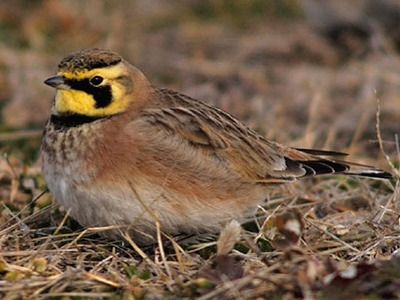Barring any unexpected natural phenomenon within the next 24 hours, this will be my last post for 2005.
Mist on the Moors
(Photo credit - Rob J)
On Monday morning I was picked up at 6:00am by my friend Steve. We then proceeded to pick-up three other friends and head up to the Bronx. We would be spending the day at the New York Botanic Gardens tallying all the bird species. This would be the second time that I’d be lending a hand (or eyes and ears) to the folks compiling the Bronx leg of the annual Christmas Bird Count. It would be my first time covering every inch of the NYBG.
I would have preferred better weather but on Christmas Counts you take what you are given and make the best of it. It rained on and off (mostly on) for the entire day. Only once did we have an outright downpour and my new waterproof shell, thankfully, passed the test. There isn’t much you can do when your bins get blurry from raindrops other than to wipe them off and hope you don’t miss a great bird in the process. Flushing a Great Horned Owl in the woods made it worth the effort.
Berries and drips
(Photo credit - Rob J)
Black-capped Chickadees appeared to be the bird of the day as they were seen in very good numbers. We kept crossing paths with an adult Cooper’s Hawk who was doing her own bird survey of sorts. At one point, we stood on a bridge and watched her perched on a snag above the Bronx River. I noticed her wagging her tail from side to side. I read somewhere that hawks will wag their tail when excited. I guess the numerous little birds and a lack of competition roused her spirits.
Winterberries (Ilex verticillata)
(Photo credit - Rob J)
Winterberry and other fruiting trees and shrubs created bright patches for my eyes and little oases for the birds. One very protective mockingbird chased a Hermit Thrush from “his” Winterberry shrub. The Scrooge had little respect for the holiday season or the fact that he was rude to the only Hermit Thrush in the entire park.
Brown Creeper (Certhia americana) preening
(Photo credit - Steve Nanz)
-Click here for more info on Brown Creepers-
We ate our lunch in the garden’s cafe. Our table was in the corner of the room, two large plate glass windows on either side of us. Interspersed between bites of food and complaints of the weather were announcements of various birds in the trees just beyond the glass. A Brown Creeper was spotted clinging to the side of a conifer as it preened its wet feathers. Moments later an opening in the clouds revealed a swathe of azure sky. The sun brightened and warmed the creeper’s resting place near the base of the tree. Steve suddenly jumped up, grabbed his camera and ran outside. Creepers are energetic little creatures that are rarely seen sitting still, let alone preening. Steve was able to take four or five photos before the clouds returned and closed off the patch of blue, returning the garden to shades of gray.
Bird's Nest mushrooms (Crucibulum vulgare)
(Photo credit - Rob J)
-Click here for more info on Bird's Nest mushrooms-
- - - - -
Bronx CBC - New York Botanic Garden, 12/26/2005
-
Wood Duck
Cooper's Hawk
Red-tailed Hawk
Ring-billed Gull
Great Horned Owl
Red-bellied Woodpecker
Yellow-bellied Sapsucker
Hairy Woodpecker
Northern Flicker
Fish Crow
Black-capped Chickadee
Tufted Titmouse
Red-breasted Nuthatch
White-breasted Nuthatch
Brown Creeper
Hermit Thrush
Gray Catbird
Northern Mockingbird
Cedar Waxwing
Eastern Towhee
Chipping Sparrow
Savannah Sparrow
Fox Sparrow
White-throated Sparrow
Dark-eyed Junco
Common Grackle
Brown-headed Cowbird
House Finch
American Goldfinch
Other common species seen (or heard):
Canada Goose, American Black Duck, Mallard, Herring Gull, Rock Pigeon, Mourning Dove, Downy Woodpecker, Blue Jay, American Crow, American Robin, European Starling, Northern Cardinal, Song Sparrow, Red-winged Blackbird, House Sparrow





